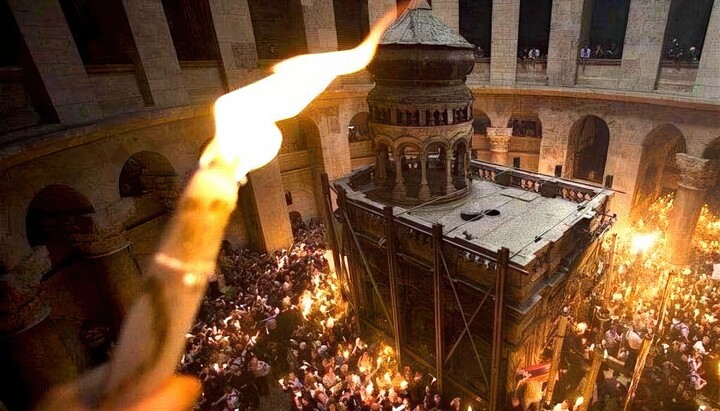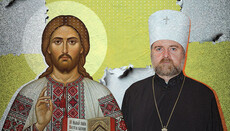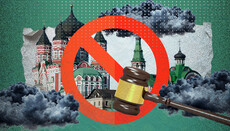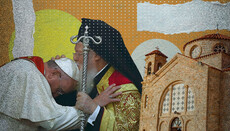On the testimonies of the supernature of the Holy Fire

It is impossible to dispute the universally acknowledged and unique miracle of the Holy Fire.
Every year, during Great Lent and Holy Week, the devil tries to tempt the faithful. One of his most monotonously repeated challenges is the denial of the great and unique miracle of the Holy Fire, which descends from the Life-Giving Tomb of our Lord in Jerusalem.
Yet, no matter how hard he tries, no matter what methods he uses, the universally recognized miracle of the Holy Fire cannot be denied. The most reliable witness to the Holy Fire is history itself. There are irrefutable historical testimonies dating back from the 4th century to the present day that confirm it.
A fascinating book "Holy Fire: The Miracle of the Light of the Resurrection at the Tomb of Jesus. Seventy Historical Accounts (4th - 16th C.)” by engineer-architect Haris Skarlakidis (Athens, 7th edition, 2021) assembles historical accounts of the celebrated event, confirming that in the All-Holy Church of the Resurrection, the great diverse and multifaceted miracle of the Holy Fire takes place on the Feast of the Lord's Resurrection annually.
I call it diverse and multifaceted because its manifestations are not always the same: the central oil lamp of the Holy Sepulchre is lit miraculously, sometimes also the lamps in the Church of the Resurrection or the candles held by the faithful.
Indeed, in earlier times, before the construction of the Holy Edicule, when the Lord’s Tomb was visible to all the faithful, its miraculous lighting by the Holy Fire was immediately evident. Moreover, the Holy Fire often appears throughout the Church of the Resurrection as flashes of lightning, or as balls or rays of light. And all of these miraculous, lightning-like manifestations occurred in earlier times when there was no electricity! Furthermore, how can one explain by the laws of physics the fact that the Holy Fire, in the first moments of its appearance, gives light but does not burn? Every year, we see many believers touch their faces (and some with thick beards!) to the flame of a bundle of 33 candles lit by the Holy Fire, and they are not burned.
The historical testimonies cited by Haris Skarlakidis in his above-mentioned work come not only from Orthodox or heterodox Christians but also from non-Christians, Muslims, most of whom speak of this event with respect. The national origins of the 85 authors who testify to the Holy Fire are also impressive: French (17), English (9), Greek-Byzantines (8), Italians (7), Arab Muslims (7), Germans (6), Ethiopians (5), Armenians (5), Russians (4), Persians (4), Icelanders (3), Egyptian Copts (2), Iraqis (Chaldeans) (2), as well as a Cypriot, a Syrian, a Moldovan, a Belgian-Flemish, a Austrian, and a Swiss!
An irrefutable witness of the miracle of the Holy Fire is the column at the main entrance of the Church of the Resurrection, which cracked in 1579 when the Ottoman authorities refused to allow the Orthodox Patriarch to enter the Church and instead gave permission to the Armenian (Monophysite) patriarch. At the hour of the Holy Fire’s descent, the fire “emerged” from the column and lit the lamps of the Orthodox faithful who were locked outside the Church. A Muslim named Tunor, who witnessed the miracle, confessed Christ and was martyred for His name.
We conclude our brief account of the great miracle of the Holy Fire with the testimony of the Persian sage al-Biruni (973–1048), one of the greatest scholars of all time, who wrote over 150 treatises covering all fields of knowledge. In his work “Chronology of Ancient Nations” (written in 1000 AD, preserved in five manuscripts and first published in 1878), al-Biruni writes:
"Concerning the Saturday of the Resurrection, they tell a story which astonishes the investigator of the natural sciences, and the cause of which cannot be found. Were it not for the unanimity of its opponents, who report that they saw it with their own eyes, and were it not for the fact that even prominent scholars and others have written about it in their works, it would hardly be credible. I learned of it from books and heard it from al-Faraj ibn Salih of Baghdad, who said that in the center of the Church of the Resurrection in Jerusalem, a tomb of Jesus is carved into the rock, which is enclosed under a dome. Above it rises a larger dome, and around the rock are galleries from which Muslims observe.
Christians and all others who come on that day to the Tomb pray and call upon Almighty God from noon until evening. The muezzin of the mosque, the chief prayer leader, and the city’s emir also come and sit near the Tomb. They bring their own lamps and place them there while the Tomb is still sealed. Meanwhile, the Christians have already extinguished their lamps and torches and wait until they see a pure white fire that lights the lamp. From this fire, lamps in chapels and churches are lit. A written report is then sent to the Caliph [in Baghdad] indicating the time when the fire descended. From the speed of the descent and whether it came close to noon, it was deduced whether the year would be fruitful. If the descent was delayed until evening or later, the year was expected to be unfruitful.
The one who informed me also told that a sultan once replaced the wick with copper wire so that it would not ignite and thus prevent the miracle. Yet, when the fire descended, even the copper was set ablaze. The appearance on this day of this heavenly fire, which returns at a set time and place, gives reason for us to remain silent."
(G. S. Strohmaier, Al-Biruni, In den Gärten der Wissenschaft, Leipzig, 1988, pp. 125–126; Haris Skarlakidis, Holy Fire: The Miracle of the Light of the Resurrection at the Tomb of Jesus, Athens, 7th ed., 2021, pp. 61–62.)












